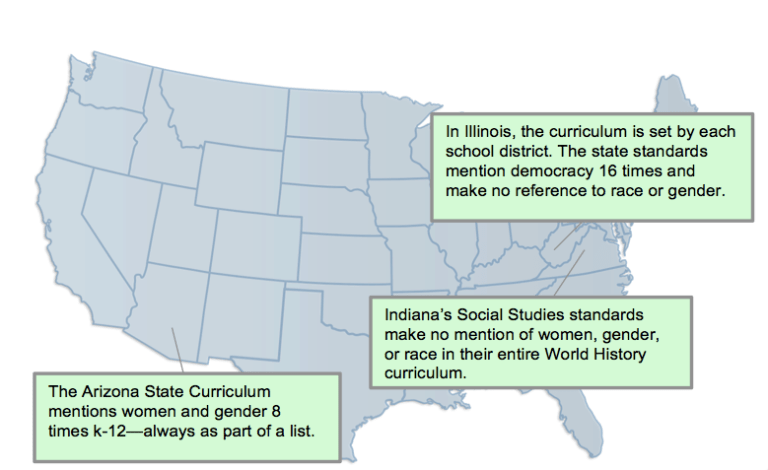We are building coalitions of students and teachers to petition decision-makers in schools, districts and states to rewrite educational policies and learning standards to include rich and intersectional material on women and gender. Modeled on GLSEN’s work building Gay-Straight Alliances in schools during the 1990’s and 2000’s, we are starting small with one pilot program and working with students and teachers to figure out the most effective and adaptable program so we can build Teach About Women Coalitions at schools all over the country.
These coalitions will be grassroots forces for change in teaching practices, school policy and national learning guidelines. With TAW’s guidance, each coalition will launch a local campaign in their school or district to demand that schools include rich and diverse material on woman and examine gender inequalities and actively promote anti-bias education from kindergarten through 12th grade.
These coalitions will be grassroots forces for change in teaching practices, school policy and national learning guidelines. With TAW’s guidance, each coalition will launch a local campaign in their school or district to demand that schools include rich and diverse material on woman and examine gender inequalities and actively promote anti-bias education from kindergarten through 12th grade.
Impact on policy
In 5 years, 375 student-activists will be advocating for gender equity in 25 schools/districts through coalitions. More than 10,000 students will benefit from their schools/districts adopting gender-inclusive guidelines.
Step 1: We start with community.
Gone are the days of “color-blind” and “gender-blind” classrooms. By ignoring the power dynamics of the past, classrooms perpetuate them. Students all over America deserve to learn about women. Not only do we promote awareness of the lack of women’s voices in classrooms, we provides students and teachers with meaningful action steps they can take to work for change.
Step 2: We build student-teacher coalitions at schools across the country.
Through targeted emails and social media, Teach About Women contacts, supports, and advises educators around the nation as they
- Identify and enumerate the lack of women and gender-inclusive materials in their own state curricula.
- Propose specific changes and revisions.
- Petition decision-makers in their own states.
Step 3: We stay connected to work together.
Once we have spread awareness and galvanized support, we gather experts in various fields to create new state learning standards–standards that reflect a complete picture of the human experience including the rich, diverse, and intersectional lives of women and men.

